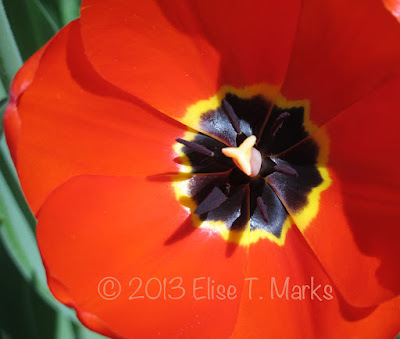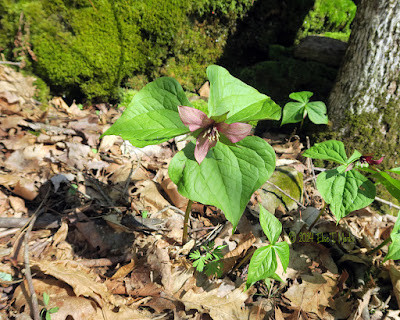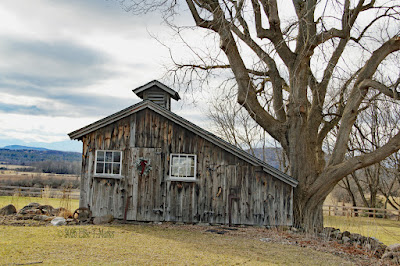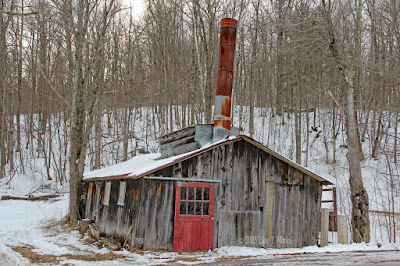Saturday, May 10, 2025
Tulip Delight
Monday, April 28, 2025
Trilliums
Spring Woodland Flowers.
Four types of trilliums grow in Vermont; White trillium, Painted trillium, Nodding trillium, and Red Trillium. It takes 2 years for a trillium seed to send out its first leaf. Trillium seeds are primarily dispersed by Ants. Maroon trillium goes by many names, like Wake-robin or Stinking Benjamin.
Never pick a Trillium!
Here's why...
1. It takes 9 years after germination for a trillium to flower.
2. Each flower yields only ONE seed pod each year.
3. Each plant can live up to 25 years, and gains all of its nourishment for the remainder of the year during the spring when its leaves are present.
4. Trillium are propagated by ANTS. Not bees, the wind or birds. The seeds are covered by a sweet coating, which entices the ants to carry seeds underground into their colonies. After eating the coating, the seed germinates in the perfect subterranean environment.
Every trillium in the forest is essentially a miracle.
Did you know that Four types of trilliums grow in Vermont; White trillium, Painted trillium, Nodding trillium, and Red Trillium. It takes 2 years for a trillium seed to send out its first leaf. Trillium seeds are primarily dispersed by Ants. This one is an unusual color and may be a hybrid, since it looks like a combo of a white and a red trillium, and it's color is mottled. This is the only one I've seen like this. I found This in Essex, Vermont
THANKS FOR YOUR VISITS, FAVS AND COMMENTS. AS ALWAYS, APPRECIATED VERY MUCH!© ALL RIGHTS RESERVED BY ELISE T. MARKS. PLEASE DO NOT USE THIS IMAGE ON WEBSITES, BLOGS OR ANY OTHER MEDIA WITHOUT MY EXPLICIT WRITTEN PERMISSION.MY PHOTOGRAPHS ARE AVAILABLE FOR PURCHASE
MY PHOTOGRAPHS ARE AVAILABLE FOR PURCHASE
Tuesday, April 15, 2025
Shelburne Farms
Sunday, April 13, 2025
Spring Wildlife 2025
Thanks for your visits, favs and comments. As always, appreciated very much!
© all rights reserved by Elise T. Marks. Please do not use this image on websites, blogs or any other media without my explicit written permission.
Thursday, April 10, 2025
Jack In The Pulpit
MY PHOTOGRAPHS ARE AVAILABLE FOR PURCHASE
THANKS FOR YOUR VISITS, FAVS AND COMMENTS. AS ALWAYS, APPRECIATED VERY MUCH!
© ALL RIGHTS RESERVED BY ELISE T. MARKS. PLEASE DO NOT USE THIS IMAGE ON WEBSITES, BLOGS OR ANY OTHER MEDIA WITHOUT MY EXPLICIT WRITTEN PERMISSION.
Disclaimer
My blog is meant to inform and I strive to be totally accurate. It is solely up to the reader to ensure proper plant identification. Some wild plants are poisonous or can have serious adverse health effects.
Tuesday, April 8, 2025
Maple Sugar Houses Of Vermont
 Native Americans began the practice of Maple Sugaring long before Europeans arrived in North America. However, no one knows what tribe first discovered it. Maple sugaring is a deeply rooted farming tradition that has made Vermont the leading maple syrup producer in the United States.
Native Americans began the practice of Maple Sugaring long before Europeans arrived in North America. However, no one knows what tribe first discovered it. Maple sugaring is a deeply rooted farming tradition that has made Vermont the leading maple syrup producer in the United States.
My photographs are available for purchase through https://elisecreate.wixsite.com/mysite
Thanks for your visits, favs and comments. As always, appreciated very much!
© all rights reserved by Elise T. Marks. Please do not use this image on websites, blogs or any other media without my explicit written permission.
Saturday, March 8, 2025
Happy International Women’s Day!
On this International Women’s Day, I celebrate all my fellow women who refuse to be invisible. Keep shining, keep creating, and keep inspiring! Your voice matters, your work is valuable, and your dreams are worth living.
























































